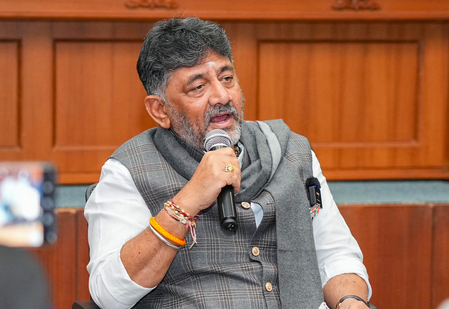
New Delhi, Sep 28 (IANS) The GST 2.0 rate cuts are set to benefit Madhya Pradesh’s economy across diverse sectors, leading to higher earnings for artisans and stronger MSMEs as competitiveness improves due to lower input costs and demand for consumer goods and services goes up with the decline in prices.
From the weavers of Maheshwar and the artists of Mandla to the cement workers of Satna and the footwear makers of Dewas, the reforms promise widespread impact across rural and urban livelihoods. By reducing the incidence of tax and opening new market opportunities, these changes align with the vision of Atmanirbhar Bharat and Viksit Bharat 2047, positioning Madhya Pradesh as a major beneficiary of GST reforms, according to an official statement issued on Sunday.
From the food streets of Indore to the cement hubs of Satna and the looms of Maheshwar, Madhya Pradesh’s economy is deeply rooted in agriculture, crafts and industry. The recent GST rate rationalisation is expected to ease costs across these diverse sectors, making essentials more affordable for households and improving competitiveness for producers.
The reforms are expected to support farmers, artisans, MSMEs and large industries alike, opening new opportunities for growth and livelihoods, the statement said.
Indore is a GI-tagged hub for savouries like sev, laung sev, mixture and chivda. The sector supports nearly one lakh direct and 2.5 lakh indirect jobs, with exports reaching the Middle East, the UK, and the US. With GST on ‘namkeens’ cut from 12 per cent to 5 per cent, products are expected to be cheaper. This will encourage higher domestic sales and improve the competitiveness of exports.
Clusters in Dewas, Indore and Gwalior, combining both industrial units and small workshops, employ about 40,000 direct and 1.2 lakh indirect workers. With GST on footwear up to Rs 2,500 reduced from 18 per cent to 5 per cent, prices are expected to fall by around 11 per cent. This enhances affordability for rural and urban households, supports small artisan livelihoods, and strengthens Madhya Pradesh’s footwear industry in competing with synthetic alternatives.
Madhya Pradesh, India’s second-largest soybean producer, is also an important hub for agro-mechanisation. Clusters in Indore, Bhopal, Dewas, Gwalior, Ujjain and Vidisha are largely MSME-driven, producing seed drills, threshers, harvesters and irrigation pumps for farmers across Madhya Pradesh, Chhattisgarh and Uttar Pradesh. With GST on tractors, pumps and implements reduced from 12 and 18 per cent to 5 per cent, modern farm tools have become more affordable for small and marginal farmers, while improving the competitiveness of local MSMEs against imports.
The state is home to a wide range of traditional crafts, many of which carry GI tags and are globally recognised.
The Maheshwari handloom sector in Khargone district sustains around 8,000 weavers across 2,600 looms, with women playing a vital role in winding, spinning and dyeing. The craft has deep historical roots. Exports reach Europe and the US, often through NGOs and boutique collaborations.
Wooden lac toys produced mainly in Budhni (Sehore), Ujjain and Gwalior are valued as eco-friendly alternatives to plastic. These have become cheaper due to the GST rate cuts, which will lead to higher sales and increased earnings for artisans.
Similarly, artisans in Mandla, Betul, Ujjain and Tikamgarh who are known for terracotta toys, idols and decor, produced mainly by rural and women-led households, will also benefit from the reduction in GST on these items.
Bamboo and cane handicrafts and brassware are yet another sector which will see increased prosperity due to the GST rate cuts. With GST on brassware reduced from 12 per cent to 5 per cent, prices are expected to fall by about 6 per cent, helping artisans compete against stainless steel and aluminium substitutes while also expanding export competitiveness.
In the industrial sector, Madhya Pradesh is India’s largest cement producer, with major hubs in Satna, Katni, Damoh and Rewa. The sector provides about 50,000 direct jobs and over two lakh indirect jobs in mining, transport and contracts. With GST reduced from 28 per cent to 18 per cent, the price of a 50-kg cement bag is expected to drop by Rs 25-30. This will boost demand in housing and infrastructure projects while improving the competitiveness of local producers.
Similarly, the sandstone hubs of Gwalior, Shivpuri and Tikamgarh, which cater to the domestic market and have a strong demand in Europe, the US, and the Gulf, are headed for higher growth.
–IANS
sps/dpb




